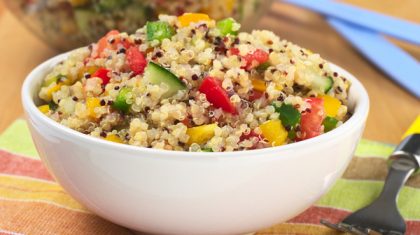Quinoa is a plant food that has become increasingly popular amongst health-conscious people. But can it be called a cereal? Is quinoa for diabetes a healthy option and worth the cost?
Quinoa is a grain crop that is rich in fiber, magnesium, iron, potassium, phosphorus and various other antioxidants. Although it is not part of the cereal category, it can be called a pseudo-cereal. There are three types of quinoa: red, black, and white that has the following nutrition content:

- Protein: 8gm
- Fiber: 5gm
- Manganese: 58%
- Magnesium: 30%
- Phosphorous: 28%
- Folate: 19%
- Copper: 18%
- Iron: 15%
- Zinc: 13%
- Potassium: 9%
Health Benefits of Quinoa
If the nutrient profile mentioned above does not establish the health benefits of quinoa for diabetes, here are some more:
- Known to have anti-inflammatory, anti-cancer, anti-viral, and anti-depressant effects
- Rich in fiber content, higher than other types of grain
- Gluten-free, is perfect for people with high sugar levels
- High in protein and contains all nine essential amino acids
- Low in the glycemic index table indicating good control of sugar levels
- Loaded with minerals like magnesium and iron
- Helps in improving metabolic health
Is Quinoa Worth the Cost?
The only drawback of quinoa is the cost associated with this superfood. Quinoa has a hard outer layer called saponin, which protects the seed but is bitter in taste. The first step is removing saponin and then washing it properly. Since this is a 2-4 week long process, the cost of quinoa becomes high. Nevertheless, quinoa health benefits are such that it makes this seed cost-effective.
Quinoa is a grain that is gaining popularity day by day. With its richness in fiber, protein, and minerals, it surely is a superfood to be included in a diabetes diet.
Consult BeatO’s health coach for free and control your diabetes. Download the BeatO app!
Check your blood sugar level with Beato Glucometer today.




